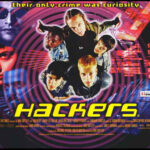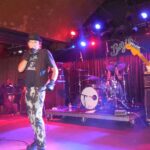In the pantheon of 1980s cult classics, “Night of the Comet” stands out as a forgotten gem, blending elements of science fiction, horror, and comedy into a unique cinematic experience. Released in 1984 and directed by Thom Eberhardt, the film presents a post-apocalyptic vision of Los Angeles following the passage of a mysterious comet. With a plot that combines nods to classic B-movies with a strong female-led narrative, “Night of the Comet” offers a refreshing take on the apocalypse genre that continues to captivate audiences decades later.
The story begins with the impending arrival of a once-in-a-lifetime comet, which hasn’t been seen since the prehistoric era. As crowds gather to witness the celestial event, scientists warn of potential dangers, but the warnings go unheeded. Among those unfazed by the ominous predictions are sisters Regina and Samantha Belmont, played by Catherine Mary Stewart and Kelli Maroney, respectively. Regina is a tough, street-smart teenager, while Samantha is her cheerful but somewhat naïve younger sister. Both girls work at a local movie theater, adding a layer of meta-commentary to the film’s narrative.
As the comet passes Earth, it unexpectedly turns the majority of the population into red dust, leaving only a handful of survivors. Regina and Samantha, having spent the night in a steel-lined projection room at the theater, emerge unscathed, shielded from the comet’s effects. Finding themselves seemingly alone in the deserted city, they initially revel in their newfound freedom, unaware of the dangers lurking in the shadows. However, they soon encounter other survivors, including Hector, a truck driver played by Robert Beltran, and a group of scientists led by Dr. Carter, portrayed by Geoffrey Lewis.
What sets “Night of the Comet” apart from typical post-apocalyptic fare is its emphasis on the strength and resourcefulness of its female protagonists. Regina and Samantha are not damsels in distress but rather capable survivors who navigate the dangers of the new world with courage and wit. Stewart and Maroney deliver charismatic performances, infusing their characters with a blend of vulnerability and resilience that makes them instantly relatable. Their sisterly bond serves as the emotional core of the film, anchoring the story amidst its more outlandish elements.
Despite its low-budget origins, “Night of the Comet” boasts impressive production values, particularly in its depiction of a deserted Los Angeles. The city streets, normally bustling with life, become eerily empty, save for the occasional survivor or threat. The film’s cinematography effectively captures the desolate beauty of the post-apocalyptic landscape, using empty streets and abandoned buildings to create an atmosphere of isolation and dread. This juxtaposition of familiar locations rendered unfamiliar adds to the film’s sense of unease, as the characters navigate a world that has been irrevocably changed.
In addition to its strong visual elements, “Night of the Comet” features a memorable soundtrack that evokes the spirit of the 1980s. Composed by David Richard Campbell, the score combines synthesizer melodies with rock-infused tracks, perfectly complementing the film’s retro-futuristic aesthetic. Standout songs include the infectious pop tune “Girls Just Want to Have Fun” by Cyndi Lauper, which plays during a pivotal sequence in the film, as well as the haunting instrumental piece “The End of the World,” which underscores the gravity of the characters’ situation.
As Regina, Samantha, and their newfound allies attempt to navigate the dangers of the post-apocalyptic landscape, they uncover a sinister plot involving a government conspiracy and a group of mutated humans known as “zombies.” These mutated individuals, who were only partially affected by the comet’s radiation, possess enhanced strength and aggression, posing a formidable threat to the survivors. As tensions rise and alliances are tested, Regina and Samantha must rely on their ingenuity and courage to survive.
One of the film’s strengths lies in its ability to blend elements of horror and comedy seamlessly. While “Night of the Comet” features its fair share of tense moments and jump scares, it also contains plenty of humor, much of it derived from the witty banter between Regina and Samantha. Their lighthearted exchanges provide moments of levity amidst the darkness, serving to humanize the characters and deepen their emotional connection with the audience. This balance of tones is a testament to Eberhardt’s skill as a director, as he deftly navigates between genres without sacrificing narrative coherence.
At its core, “Night of the Comet” is a celebration of female empowerment, presenting its heroines as capable and independent individuals who refuse to be defined by traditional gender roles. Regina and Samantha are not passive victims awaiting rescue but active agents of their own destiny, capable of facing whatever challenges come their way. In a genre often dominated by male protagonists, their presence is a welcome departure from convention, offering a fresh perspective on the apocalypse narrative.
In conclusion, “Night of the Comet” remains a standout example of 1980s genre filmmaking, blending elements of science fiction, horror, and comedy into a uniquely entertaining package. With its strong female protagonists, memorable visuals, and infectious soundtrack, the film continues to captivate audiences with its timeless charm. While it may not have achieved the same level of recognition as other cult classics of the era, its enduring popularity speaks to its lasting appeal. Whether viewed as a campy relic of the past or a subversive commentary on gender and genre, “Night of the Comet” remains a must-see for fans of 1980s cinema and beyond.
Stream the movie for FREE ON TUBI (no registration required)
This post has already been read 250 times!










